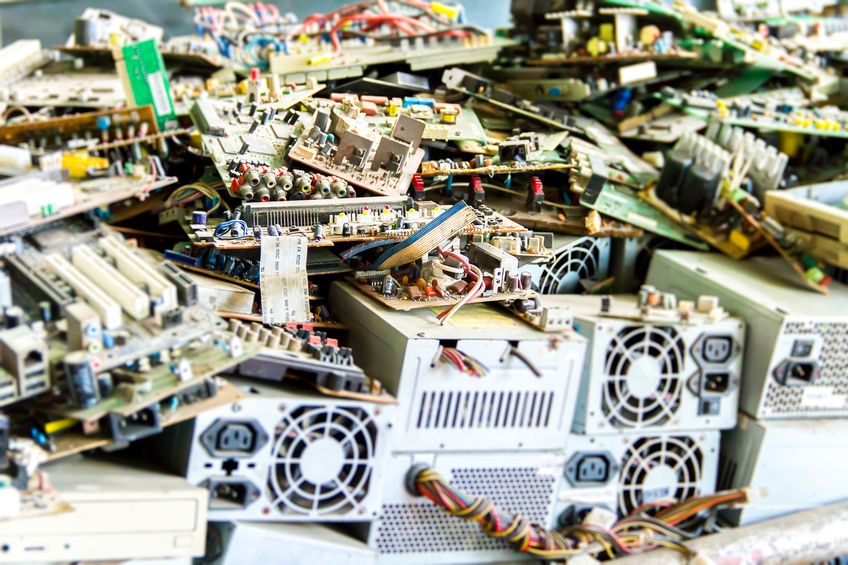Smartphones, computers, tablets, and other electronic devices are a staple of modern society. They’re also something that people upgrade frequently, often without thought of what happens to their old devices once they throw them away. Electronic waste (e-waste) is becoming increasingly problematic because some of these devices contain toxic chemicals such as barium, cadmium, and lead. Additionally, the materials used to manufacture plastic cases for these devices can release harmful e-waste into the environment.

The Problem of E-waste in Landfills
As e-waste continues to accumulate in landfills, it increases the likelihood of toxic materials seeping into the ground and ending up in water that people drink, bathe with, and use for dozens of other purposes. To fully appreciate the problem, people need to carefully consider these statistics:
- 87 percent of people throw their unwanted electronics in the garbage. According to the Environmental Protection Agency (EPA), this includes more than 100 million cell phones, 20 million television sets, and 41 million computers every year.
- The average time to own a smartphone before upgrading to a new model is 18 months.
The e-waste problem is one that people in developed countries can’t afford to ignore any longer. It’s up to individuals to do their part and companies to take leadership initiatives and set a good example for their customers and community.
Responsible E-waste Disposal Options
If an electronic device still functions but the user has moved onto something new, there’s a good chance that he or she could sell it for cash. Reseller shops and secondary online marketplaces like eBay are good options to investigate for those hoping to make a little bit of extra money. Some stores also offer e-waste disposal sites. After filling a bin of unwanted electronics from the public, the retailer delivers them to a recycling center.
Donating an unwanted electronic device to a non-profit agency is another option to prevent it from ending up in a landfill. For example, a charity would probably appreciate receiving a used computer so it could use the funds it would have spent on a new computer to help more clients.
Shelters that house battered women and their children can take old cell phones and distribute them to clients if they ever need to call 911. Making a donation is an excellent way for people to support charities that matter to them.
Yet another option is to find a recycling center independently and bring in items as they become obsolete. Finally, calling a junk hauling company is an easy way to clear space and ensure that the items don’t end up causing environmental harm at the same time.
Be Sure to Remove Sensitive Information First
To maintain privacy, it’s important to remove personal data from cell phones, computers, and other electronics before donating, selling, or recycling. With cell phones, this should include removing all saved phone numbers, the call history log, and any other data that could personally identify the owner or his or her contacts. Erasing the hard drive of a computer is essential before getting rid of it because it could potentially have years of data stored inside of it, some of which could be highly personal.
These steps might sound small, but harmful e-waste could become a thing of the past if enough people step up to do their part.
To read more on topics like this, check out the community category.
Leave a Reply